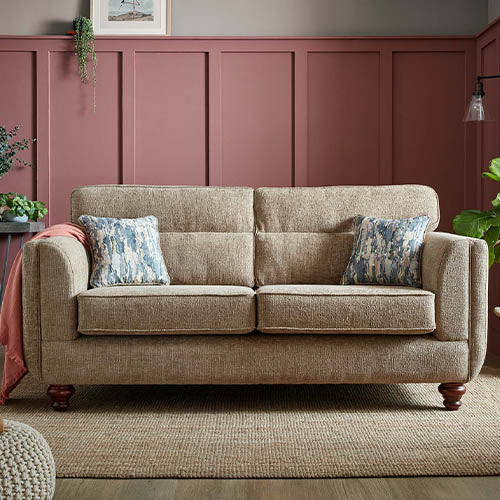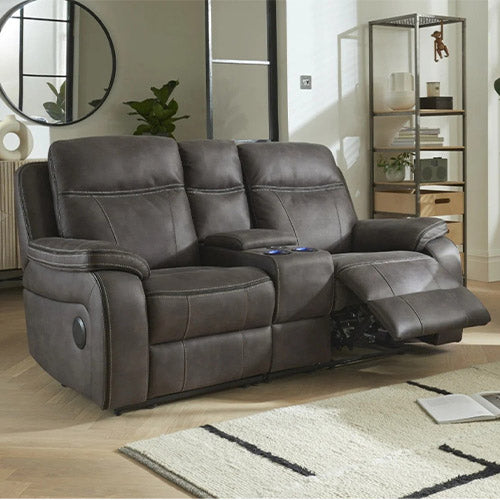
Bed-iquette: The Unwritten Rules of Bed Sharing
Sharing a bed with a partner can be a beautiful experience, bringing you closer and fostering a sense of intimacy. However, it also comes with its fair share of challenges. From blanket battles and space disputes to snoring and temperature disagreements, navigating the unwritten rules of bed sharing can sometimes feel like an art form.
In this blog post, we're diving into the world of "bed-iquette" – the unspoken guidelines and practical tips for harmonious bed sharing. Whether you're in a long-term relationship, have a new partner, or occasionally share a bed with a friend or family member, understanding and addressing these common issues can greatly improve the quality of your sleep and your relationship.
So, get ready to discover strategies for fair blanket allocation, maintaining personal space, dealing with nighttime noise, handling differing wake-up times, managing temperature preferences, and finding the perfect balance between cuddling and comfortable sleep positions. By exploring these unspoken rules and offering practical solutions, we aim to make your bed sharing experience more enjoyable and restful for both you and your partner.
Let's jump into the realm of bed-iquette and learn how to create a sleep environment that promotes harmony, comfort, and blissful rest.

The Great Blanket Divide
One of the most common challenges when sharing a bed is the infamous battle for blankets. It's no secret that some individuals have a tendency to unintentionally monopolize the covers, leaving their bed partner shivering and uncovered. This blanket hogging can lead to disrupted sleep and even resentment between partners.
To navigate this issue, consider practical solutions that promote fairness and comfort. One option is to use separate blankets or comforters, allowing each person to have their own covers. This ensures that everyone can cocoon themselves in warmth without the constant tug-of-war over the shared blanket.
Alternatively, if you prefer a single blanket, consider opting for a larger-sized comforter that provides ample coverage for both individuals. This can reduce the likelihood of one person inadvertently stealing the covers.
Communication is key in resolving the blanket divide. Discuss your preferences openly with your partner, emphasizing the importance of both individuals feeling warm and comfortable throughout the night. By finding a solution that suits both of your needs, you can bid farewell to chilly nights and blanket-related disagreements.
Remember, a good night's sleep is essential for both physical and emotional well-being. So, tackle the blanket divide head-on and create a sleep sanctuary where warmth and harmony coexist.

The Battle for Space
Sharing a bed also means sharing the physical space, and this can sometimes lead to territory disputes during the night. It's not uncommon to find yourself waking up on the edge of the mattress while your partner sprawls out, claiming a lion's share of the bed.
To maintain a fair distribution of space, it's important to establish boundaries and communicate openly with your bed partner. Start by discussing your sleep preferences and personal space needs. If you find yourself constantly feeling cramped, consider investing in a larger bed size that accommodates both individuals comfortably.
To create a visual divide, you can also place a body pillow or a rolled-up blanket between you and your partner. This physical barrier can act as a gentle reminder to respect each other's space while providing a sense of separation.
If you and your partner have different ideas about personal space during sleep, finding a compromise may be necessary. This could involve exploring various sleeping positions, such as a "spooning" arrangement or sleeping back-to-back, to strike a balance between closeness and individual comfort.
Remember, open communication and understanding are essential in resolving space-related issues. By establishing clear boundaries and finding a compromise that works for both partners, you can create a sleep environment where everyone feels comfortable and respected.

Night-time Noise
Sleeping with a partner can introduce a whole new world of sounds during the night. Whether it's snoring, tossing and turning, or even talking in one's sleep, these noises can disrupt sleep and lead to frustration.
If snoring is an issue, it's essential to address it with empathy and understanding. Encourage your partner to seek remedies such as adjusting sleep positions, using nasal strips, or even exploring medical solutions if necessary. Alternatively, you can consider using earplugs or employing white noise machines to help drown out disruptive sounds.
Tossing and turning can also impact sleep quality. If your partner's movements frequently wake you up, consider investing in a mattress that minimizes motion transfer, such as those designed with memory foam or pocketed coils. Additionally, using separate blankets can help reduce disturbances caused by movement.
Communication is crucial in addressing nighttime noise. Openly discuss your concerns with your partner, expressing the importance of a restful night's sleep for both individuals. By working together to find solutions, you can minimize disruptions and promote a peaceful sleep environment.
Remember, compromising and finding effective strategies to address nighttime noise can enhance the quality of your sleep and strengthen your relationship. Embrace open dialogue and explore different remedies to ensure that both you and your partner can enjoy a tranquil night of rest.

The Alarm Clock Conundrum
Waking up on your own terms is a luxury many of us appreciate, but when sharing a bed, differing wake-up times can pose a challenge. The blaring sound of one person's alarm clock can disrupt the precious moments of sleep for the other.
To navigate the alarm clock conundrum, there are a few options to consider. For couples with vastly different schedules, using vibrating alarm clocks or wearable alarm devices can be a game-changer. These devices can gently wake you up with vibrations or subtle sounds, without disturbing your partner's sleep.
If using separate alarm clocks, ensure that they have adjustable volume levels and choose tones that are less jarring or intrusive. Opt for gradual alarms that start softly and gradually increase in volume, allowing for a more gentle and peaceful awakening.
Communication is vital in managing the alarm clock conundrum. Discuss your wake-up routines and the importance of respecting each other's sleep schedules. By finding a middle ground that considers both individuals' needs, you can minimize disruptions and promote a harmonious morning routine.
Remember, the goal is to create a sleep environment that promotes harmony and ensures that both individuals can wake up feeling refreshed and ready for the day ahead.

The Warmth War
One of the common challenges when sharing a bed is the differing preferences for sleeping temperature. One person may feel too warm while the other craves extra warmth, creating a "warmth war" that can disrupt sleep and lead to discomfort.
To address this issue, communication and compromise are essential. Start by discussing your temperature preferences openly with your partner. Consider using separate bedding layers, such as a lighter blanket for the person who tends to feel warmer and a thicker one for the person who prefers more warmth. This way, each individual can adjust their own bedding to suit their comfort level.
If the temperature disparity is significant, you can explore using dual-control heated blankets or mattress pads. These allow each person to adjust the temperature on their side of the bed independently, ensuring optimal comfort for both.
Another solution is to create a balanced sleeping environment by adjusting the room temperature. Use fans, air conditioning, or open windows to achieve a temperature that is conducive to restful sleep for both individuals.
Remember, compromise is key. Consider finding a middle ground where both individuals can feel comfortable. Experiment with different bedding materials and discuss the ideal sleeping temperature to find a solution that works for both of you.
By addressing the warmth war and finding a compromise, you can create a sleep sanctuary where both individuals can enjoy restful nights without the discomfort of temperature conflicts.

Sleeping Positions and Cuddling Compromises
Finding the perfect balance between cuddling and comfortable sleep positions is another aspect of bed sharing that requires consideration. While cuddling can create a sense of intimacy and closeness, it's important to prioritize individual comfort and quality sleep.
It's common for individuals to have different preferred sleeping positions. Some may prefer to sleep on their backs, while others find comfort on their side or stomach. To find a compromise, consider exploring different sleep positions that allow for physical contact while still ensuring individual comfort. For example, a "spooning" position can provide closeness while accommodating different sleeping preferences.
Pillows can also play a role in achieving a balance between cuddling and comfort. Experiment with various pillow configurations that provide adequate support for each individual's preferred sleep position. This may involve using different types or sizes of pillows to accommodate specific needs.
Open communication is crucial in navigating sleeping positions and cuddling compromises. Discuss your sleep preferences openly with your partner, emphasizing the importance of both physical affection and restful sleep. By finding a balance that suits both individuals, you can create a sleep environment where closeness and individual comfort coexist harmoniously.
By being open-minded, understanding, and willing to compromise, you can create a sleep environment where both comfort and cuddling coexist harmoniously.

Find Your Dream Bed at Dante Furniture
Navigating the ins and outs of bed sharing can be a rewarding journey that brings you closer to your partner. By implementing the unwritten rules of bed-iquette and finding compromises that promote harmony and restful sleep, you can create a sleep haven that nurtures both you and your bed partner.
Visit our website or showroom to discover the perfect bed that will support your sleep and enhance your bed-sharing experience. Our knowledgeable team is ready to assist you in finding the ideal bed that suits your preferences and complements your bedroom décor.
To see the benefits of good bed-iquette, check out our guide to the benefits of a good nights sleep, or have a look at our bed size guide to see which bed suits your arrangement.
Don't compromise on quality sleep and shared comfort. Invest in a bed from Dante Furniture and embark on a sleep journey that embraces both individual relaxation and the joy of sharing a bed with your loved one.



